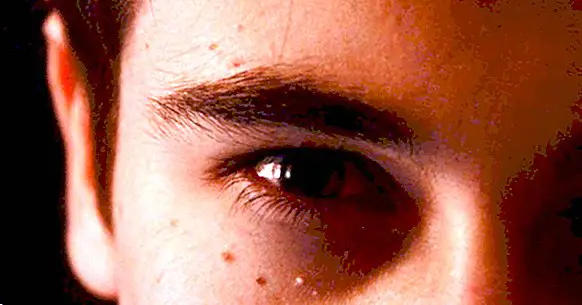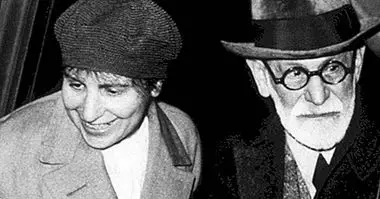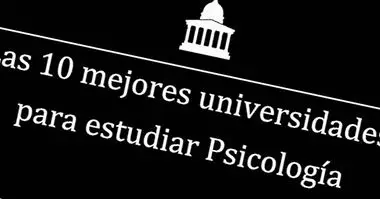Suggestion: what it is, what it is for and types
Due to certain shows and television programs, suggestive techniques have been badly damaged, have lost credibility and are perceived as a kind of spell by which a hypnotist can get anything from another person. Since it is a prodigy of music until it makes the most absolute ridicule.
Nothing could be further from the truth, Suggestion is a highly studied psychological process and that, carried out by qualified health professionals, it can be of great help in certain cognitive-behavioral treatments.
- Related article: "Cognitive distortions: 7 ways in which the mind sabotages us"
What is suggestion?
In literal terms it is known as suggestion to the psychological process that allows the mental manipulation of other people through a series of techniques; other people, media or all kinds of agents such as music or books, have the ability to guide or lead the ideas, emotions or behaviors of people .
Although traditionally associated with hypnosis, suggestions are effective and commonly used in other settings in which the person is out of a hypnotic state. For example, advertising in the media has always been accused of manipulating our behavior to achieve its own ends and benefits.
However, suggestion can have enormous power over our behavior, as well as in the way we perceive reality. But to that end, the ability of a person or agent to exercise the suggestion is just as important. the suggestible or manipulable that results the object person is .
This means that a highly suggestible person is susceptible to being manipulated by any agent without his being aware of it. In these cases it is very likely that this is carried away by what is transmitted in the media, advertisements and advertising or by what other people say.
- Maybe you're interested: "Hypnosis, that great unknown"
Its application in hypnosis and clinical practice
As described in the previous point, suggestion has traditionally been associated with hypnosis practices. And although they are closely related there are some factors that differentiate them. By hypnosis we can understand the complete process through which the person is immersed in a mental state of trance or altered consciousness, while the suggestion would be the concrete act of transmitting a certain message or information to the person.
However, There is an extensive debate about whether hypnosis or the hypnotic state is a real state of trance or if, on the other hand, the alteration of behavior is explained through factors or motivational factors such as the person's attitude or expectations. Although for many years these techniques have been highly questioned, in recent years there has been a progressive increase in their use in clinical and health contexts, both physical and psychological.
The main reason why, traditionally, these procedures have been much doubted is that they have been represented as an almost magical practice in which a person, more like a wizard or sorcerer than a professional in psychology, exercised a series of spells about the other that led him to behave eccentrically or strangely. However, several studies have shown that, in a serious way and always at the hands of a professional in psychology and hypnosis, suggestive techniques can be considerably effective as a coadjuvant of cognitive-behavioral treatments .
This means that, according to these investigations, the treatments for a series of specific conditions or ailments that are accompanied by a few sessions that include hypnotic techniques, are more effective than if they are performed without them.
These interventions include cessation treatments and some behavioral addictions, the management of physical pain, sleep disorders, weight loss processes or nocturnal enuresis in children; for which it has been shown that hypnotic processes are highly effective.
In the same way, many other experts highlight the possible efficacy of hypnotic techniques such as part of cognitive-behavioral therapy for the treatment of emotional disorders such as anxiety or depression.
Types of suggestion
There is an extensive classification of the types of suggestion, which are distinguished according to whether it is done directly or indirectly, according to the moment in which the effect of the suggestion is carried out. according to the reaction that is expected to cause .
Direct or indirect suggestion
The first classification is that which distinguishes between direct and indirect suggestions.
1. Direct suggestion
Also known as authoritarian, in this type of suggestion the person is directly indicated what they are intended to experience . For example: "notice how your eyelids become more and more heavy."
2. Indirect suggestion
Incorrectly called permissive suggestions, in this case an answer is sought without the conscious consent of the person. They are especially useful in skeptics or suspicious of the treatment.
Suggestions according to the moment
On the other hand, depending on whether the effects of the suggestion end or not at the end of the hypnotic intervention, we can differentiate between hypnotic suggestions or post-hypnotic suggestions
1. Hypnotic suggestions
When referring to hypnotic suggestions we speak of those that begin when the professional begins the suggestive technique and end with the end of the hypnotic state. That is to say, the person will only experience the effects of hypnosis for the duration of the session .
2. Post-hypnotic suggestions
In this second type of suggestion, most used in clinical practice, the suggestions are given or ordered during the session, but are experienced by the person once this is over . The intent is that the person modify their behavior or thinking in daily life, not only throughout the consultation.
Suggestions according to the reaction provoked
The last and most extensive of the classifications is that which divides the types of suggestion according to the reaction to be obtained. In this case we can distinguish between the following.
1. Motor suggestions
The motor suggestions are aimed at a physical or motor response. This includes both the induction of certain movements and the inhibition of these. Through them you can get a person move any of their joints or, on the contrary, submerge it in a state of paralysis or catalepsy .
2. Sensory-physiological suggestions
By sensory-physiological suggestions it is understood the induction of all those answers related to the psychophysiology of the person , as well as proprioceptive capacity.
Examples of these suggestions are those that try to provoke or inhibit in the person sensations of pain, of changes in temperature, of heaviness or any sensation relative to the senses, with the exception of life and auditory sense, which are included in the cognitive suggestions -perceptive
3. Cognitive-perceptive suggestions
Finally, cognitive-perceptual suggestions refer to reactions provoked in higher mental processes such as memory, as well as auditory and visual sensory processes .
Therefore, suggestive techniques can alter the ability of a person to perceive a specific stimulus, as well as cause a kind of hallucinations or visual or auditory images.
However, it is necessary to specify that these hallucinations they have nothing to do with what they pretend to provoke or pretend to get the traditional hypnosis shows , as well as the hallucinations experienced in certain psychiatric disorders.



















